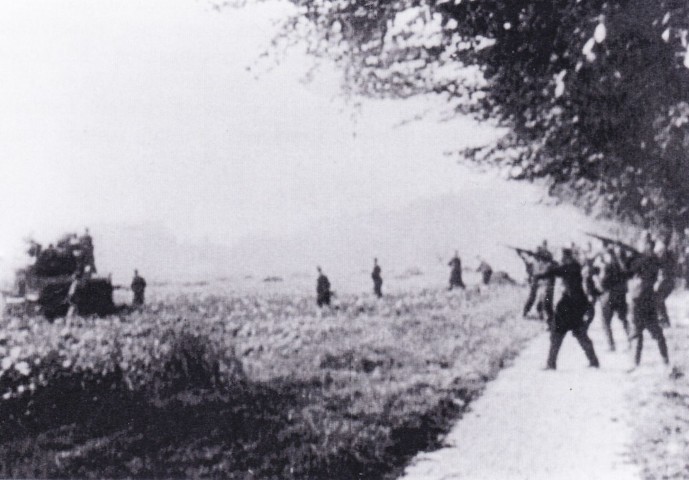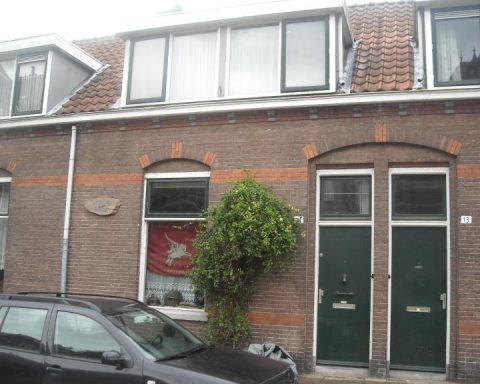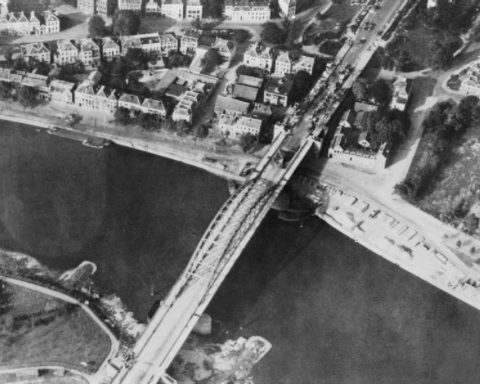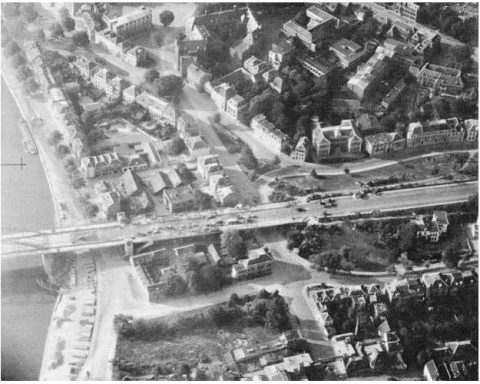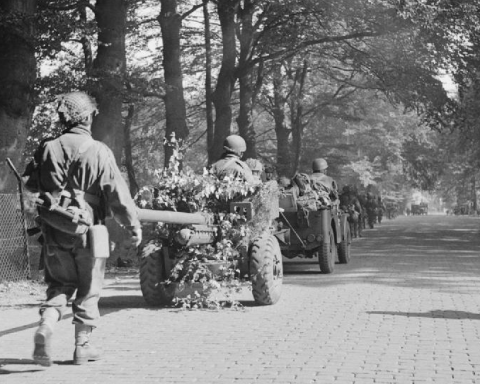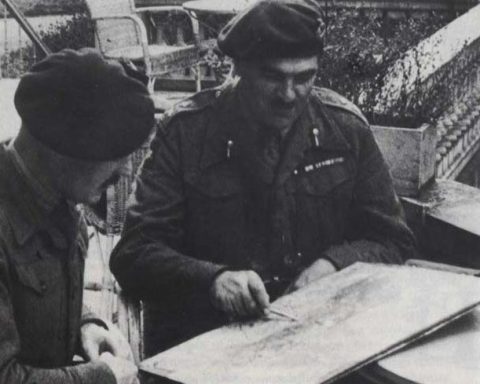A day after the first airborne landings at Wolfheze, the rest of the British airborne troops of the Airborne Division, including General Shan Hackett’s 4th Parachute Brigade, landed on the Ginkelse Heide on Monday, September 18. The 4th Parachute Brigade had almost 2,000 soldiers and consisted of three battalions: 10th Battalion, 11th Battalion and 156th Battalion.
The landings went a lot less smoothly than the airborne landings of the day before. The second lift with paratroopers left much later than intended due to fog in England. According to the British schedule, departure would be at 7 a.m. that morning. In reality the planes did not take off until four hours later at 11am when the fog had cleared.
The British troops protecting the landing areas against German attacks were unaware of the delay. They had their hands full preventing a Dutch SS Battalion from occupying the landing zone .
Moreover, the Germans knew how an airborne operation works: after the first landings, more flights always follow with reinforcements and/or supplies. So on Monday, September 18, the British and American transport planes encountered a lot of German anti-aircraft guns that had been placed by the Germans where they expected the transport planes.
Some of this anti-aircraft artillery came from the 9th and 10th SS Armored Divisions. In addition, the first flak had arrived in the region from Germany, summoned by Field Marshal Walter Model.
The Germans knew that the transport planes could only arrive from the south and west. This meant that the anti-aircraft guns were in the right place when the British approached the Arnhem area.
Anti-aircraft guns
Just like the day before, an armada of hundreds of aircraft passed over. The slow-flying C-47 transport aircraft in particular were easy prey for the German flak crews. The C-47 carried the paratroopers and flew lower than the planes pulling the gliders. The combination of the low speed and the low altitude caused the Germans to suffer many casualties.
In the book that Martin Middlebrook wrote about the Battle of Arnhem, Captain Frank King is quoted.
“At first I didn’t realize we had been hit. We prepared for the jump. The crew chief should have helped us with this, but he seemed to have fallen asleep. I got angry and shouted at him. When I saw a pool of blood under his seat, I understood that he was dead.
When I looked out the door, we seemed to be flying straight ahead, but much lower than the rest of the formation. I was shocked when I saw how low that was. At most 80 meters. I stuck my head out and saw that the entire port wing was on fire.
The light was still red and it was a serious offense to jump the red light, but I had to decide and said: ‘jump!’ We jumped quickly and almost all managed to get out of the plane. It was as if we were jumping straight onto the ground.”
The vulnerable gliders flew higher and therefore avoided the worst of the shelling. Yet the gliders also had to deal with flak. Bob Christie sat in the back of a Horsa glider.
“We suddenly heard tearing noises under a jeep. We initially thought the anchorage was loosening. If the jeep were to drive with the trailer, the glider would become uncontrollable. I crawled across the floor between the wheels, but the anchorage was still OK. Again it sounded like something was tearing, and suddenly the sun shone through ragged holes. It was flak. Reassured, we walked to our seats, where we took off our helmets and sat on them to protect our private parts.”
The paratroopers who jumped above the Ginkelse Heide discovered that the drop zone was on fire. This was the result of fighting between an SS Battalion and the British troops defending the drop zone. The fighting was still going on when the paratroopers jumped. On the side of the drop zone, Dutch SS men stood with rifles and machine guns firing at the British as they floated helplessly down by their parachutes.
Not all paratroopers ended up on the heath. Quite a few paratroopers ended up with their parachutes in the trees surrounding the Ginkelse Heide. A number of these helpless British paratroopers had been shot dead by the Dutch SS while they were hanging in their harness.
Advancing to Arnhem!
Due to the large number of British troops landing, the German troops withdrew at some point. It was now well into the afternoon. When General Hackett, commanding the 4th Parchute Brigade, took stock early in the evening, he discovered that he had lost a total of two hundred men, either in the air or during the landing. That was a tenth of his brigade’s fighting strength, before the battle had even begun…
A little later, Hackett learned that General Urquhart was missing and that General Hicks was now in charge of the entire division. Hackett exploded . Hackett felt that he was more entitled to lead the division based on years of service.

